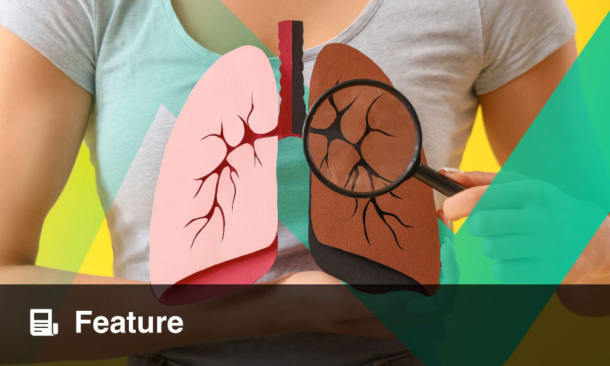Todd Bull | Professor of Medicine, Division of Pulmonary Sciences & Critical Care Medicine, University of Colorado, USA
Citation: Respir AMJ. 2025: https://doi.org/10.33590/respiramj/NUUR6164
![]()
Firstly, what led you to specialize in the field of pulmonary and critical care medicine?
I love physiology, and even during medical school I thought pulmonary and critical care would be a potential career path. My experience in the medical intensive care unit as a house officer helped solidify this interest. In the intensive care unit, having an understanding of the physiology of health and disease allows you to make the correct decisions quickly to help your patients. Pulmonary vascular disease similarly requires a deep understanding of the physiology. The interaction of the heart and lungs in health and disease is complex and fascinating. If you understand this physiology you can make adjustments to help your patient
Your research and clinical work focus on pulmonary vascular diseases, particularly pulmonary hypertension (PH). What are the key priorities and challenges when diagnosing PH, especially regarding PH categorization?
The key priorities in terms of diagnosis are identifying the underlying cause and then appropriately assessing severity; this allows the correct therapeutic decisions. Deciding which World Health Organization (WHO) group the patient belongs to is an important first step. Right heart catheterization is an essential part of this evaluation. The importance of following non-invasive studies and biomarkers and continually assessing patient risk and making adjustments to therapy based on risk is also becoming better understood
There is currently no cure for PH, but the University of Colorado has one of the only designated PH Care Centers in the region and one of the largest programs, overseeing numerous clinical trials in this area. What are the current options for PH management, and are there any recent advancements in treatment that you are particularly excited about?
It is a very exciting time in the management of PH. We have gone from no specific or effective treatments in the 1980s to a few options in the 1990s, to now five classes of medication and more than 15 different therapeutics available. We are also learning how to use these classes of medications effectively in combination, and have medications to use in Class III and IV PH. The area that many of us in the field are most excited about, is the development of an entirely new class of medications that bind activins and impact the TGF-β pathway. This pathway is integral to the development of pulmonary arterial hypertension (PAH), and as such, targeting this represents an exciting new direction moving forward.
Pulmonary hypertension associated with COPD has been a significant area of study, including your work on the PERFECT study. What insights have emerged regarding the role of inhaled treprostinil, and how do you see this shaping future management strategies?
Inhaled treprostinil is a proven, effective treatment for interstitial lung disease-related PH, which was a huge step forward. Unfortunately, it was not found efficacious for COPD-PH and the PERFECT trial was stopped early.1 COPD-associated PH is a tricky entity. I think a major issue we have in finding a treatment is the existence of multiple phenotypes in COPD-associated PH. We need to better understand how to identify these phenotypes, and then study the impact of treatment on them individually.
You recently co-authored a case report highlighting a heritable risk and overlapping features of pulmonary veno-occlusive disease and PH. How should clinicians approach genetic considerations in pulmonary vascular disease, and what implications might this have for screening and treatment?
We have known for many years that there are heritable forms of PH. It is this recognition and the identification of the BMPRII mutations that has led to the development of our newest therapy for PAH. There are also genetic mutations associated with pulmonary veno-occlusive disease. Evaluation for these mutations is becoming much more commonplace in the assessment of PAH, though it is important that such evaluations are also coupled with genetic counseling, as not all patients with mutations will go on to develop disease (variable penetrance).
Pulmonary embolism (PE) affects around 900,000 people every year in the USA. How are advanced therapies in PE, such as catheter-directed thrombolysis or novel anticoagulants, improving patient outcomes?
There is a lot of excitement around the evolving management of acute PE. Certainly, catheter directed therapies are gaining a much bigger foothold in the management of acute PE. However, we need clinical trials to better inform us on the appropriate use of these devices. Thankfully, these trials are underway, and we should be learning a lot about their role in the optimal management of acute PE in the next few years. There are also ongoing studies of novel anticoagulants under investigation, which appear efficacious in the treatment of thrombosis, while decreasing bleeding risk.
With your extensive experience in pulmonary vascular disease, what excites you most about the future of pulmonary medicine? Are there any emerging trends that you believe will significantly change the field in the next decade?
As I mentioned earlier, for PAH treatment, the move away from simply targeting vasodilation to targeting the potential causes of cellular proliferation in the pre-capillary pulmonary vasculature is very exciting. I am also very excited to see the rapidly developing evidence base in the treatment of acute PE, as well as the improvement in treatment of chronic PE/chronic thromboembolic pulmonary hypertension; especially as it relates to balloon pulmonary angioplasty. I think we have a lot to learn about balloon pulmonary angioplasty and its application in chronic thromboembolic pulmonary hypertension. There is also a lot of exciting work in the area of imaging of the pulmonary vasculature, which I think will help us further refine our ability to select and then modify therapies. It is a very exciting time to be involved in the management of patients with pulmonary vascular disease.








